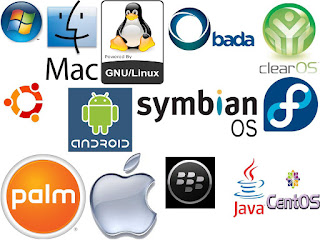The computer one of the wonders of human ingenuity, even in its original design in the1950's to carry out complicated mathematical and logical operations. with the invention of the microcomputer ( now also commonly referred to a PC or personal computers) the PC has become the tool for programmed instruction.
Educators saw much use of the PC. It has become affordable to small business, industries and homes. They saw its potential for individualization in learning is a problem since teachers usually with the class of forty one or more learners. they therefore devised strategies to use the computer to break the barriers to individualized instructions.
Computer - assisted instructional ( CAI)
The computer can be a tutor in effect relieving the teacher of many activities in has personal roles as classroom tutor. It Should be made clear however that the computer cannot totally replace the teacher since the teacher shall continue to play the major roles of information deliverer and learning environment controller. Even with the available and CAI software the teacher must.
- Decide the appropriate learning objectives.
- Plan the sequential and structured activities to achieve objectives.
- Evaluate the student's achievement by ways of tests the specific expected outcomes.
On the other hand the students n CA play their own roles as learners as they:
- Receive Information
- Understand instructions for the computer activity.
- Retain /keep in mind the Information and rules for the computer activity.
- Apply the knowledge and rules during the process of computer learning.
During the computer activity proper in CAI the computer too plays ts role as it:
- Acts as sort of tutor ( the role traditional played by the teacher )
- Provides a learning environment.
- Delivers learning information.
- Reinforces learning through drill - and - practice.
- Provides feedback
Today educators accept the fact the computer has indeed succeeded in proving an individualized learning environment so difficult for a teacher handling the whole classes. This is so since the computer is able to allow individual students to learn at their own pace motivate learning through immediate feedback during the learning process and also given the total score to evaluate the student's total performance.
CAI Integrated with Lessons
CAI computer learning should not stop with the drill and practice activities of students. in effect CAI beat in reinforcing learning through repetitive exercises such that students can practice basic skills or knowledge in various subject.
While practice exercise or learning - by - doing is still the heart of each tutorial the tutorial software should be able to:
- Teach new content / new information to students ( as CAI provides practice on old or already learned content.)
- Provide comprehensive information on concepts in additional to practice exercises.
- Call be effectively used for remediation reviewing or enrichment.
- Allow the teacher to introduce follow - up questions to stimulate students learning.
- Permits group activity for cooperative learning.
SIMULATION PROGRAMS
Simulation software materials are another kind of software that is constructivist in nature. These simulation program are:
- Teaches strategies and rules applied to real - life problems / situation.
- Ass students to make decision on models or scenarios.
- Allows students to manipulate elements of a model and get the experience of the effects of their decisions.
An example of such software is SIM CITY in which students are allowed to artificially manage city given an imaginary city environment.
INSTRUCTIONAL GAMES
While relating to low level learning objectives instructional computer games add the elements of competition and challenge.
An example's GeoSafari which introduces adventure activities for Geography History and Science.
PROBLEM SOLVING SOFTWARE
These are more sophisticated allowed than the drill and practice exercises and allow students to learn and improve on their problem solving activity.
The thinking problem solving software in which the team learners must help each other by observing and comparing.
MULTIMEDIA ENCYCLOPEDIA AND ELECTRONIC BOOKS
The multimedia Encyclopedia can store a huge database with text, images animation, audio and video.An example is eyewitness Children's Encyclopedia.























































